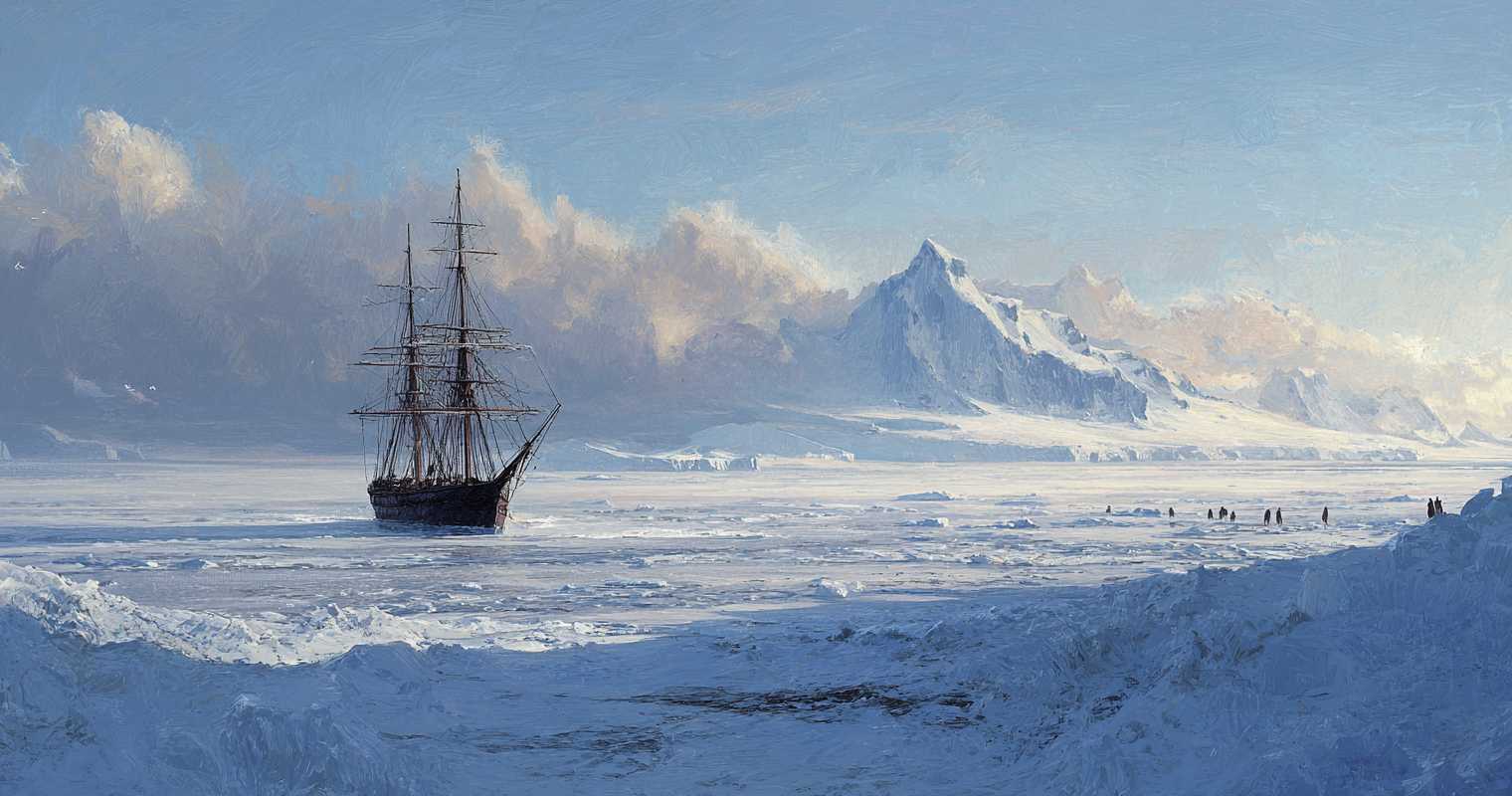
Carved from endless ice and mystery, the Antarctic History Quiz unveils a world where human determination meets nature’s most extraordinary frontier. Its vast white expanse shelters hidden landscapes sculpted by wind and time, while research stations hum with scientific ambition. Wildlife thrives at the edges, with penguins and seals adapting perfectly to this icy stage. Each season reveals new beauty, from glowing auroras to sunlit glaciers stretching farther than the eye can follow. Antarctica’s story is one of knowledge, endurance, and discovery rather than conquest or conflict. It is a place where exploration connects humanity with the planet’s most awe-inspiring extremes.
Antarctica holds a living record of Earth’s climate, preserved within layers of ancient ice. Scientists drill deep to uncover frozen time capsules, revealing secrets that transform our understanding of history and nature. Glaciologists, meteorologists, and biologists collaborate in research stations that function like self-contained communities. Every experiment builds on a legacy of curiosity, showing how determination thrives even in the harshest environments. Here, history is measured in data collected, milestones achieved, and the enduring spirit of exploration. Antarctica’s narrative is one of science in action, not battles or divisions.
Exploring Antarctica through the Antarctic History Quiz feels like stepping onto a page untouched by ordinary time. Towering icebergs drift like floating sculptures, and colonies of emperor penguins gather in the cold with remarkable resilience. International teams share knowledge while navigating a landscape both dangerous and dazzling. History here is not carved in monuments but in footprints left by explorers and the instruments they carried. Antarctica’s story invites us to celebrate discovery, endurance, and the unyielding pursuit of understanding.
Antarctica’s Landscape and Natural Wonders
The Southern Ocean surrounds this frozen land, its powerful currents influencing global climate and marine ecosystems. Icebergs the size of cities break free and drift, reshaping the horizon. These spectacles offer scientists and visitors unmatched glimpses of nature’s scale.
Beneath the ice, hidden lakes and mountain ranges remain shielded for millennia, holding secrets about Earth’s past. They demonstrate Antarctica’s role as a vault of natural history, awaiting patient exploration.
7 Fun Facts About Antarctic History Quiz
- Antarctica is the only continent without a native human population, making it entirely dedicated to science and exploration.
- The South Pole experiences six months of daylight followed by six months of darkness.
- Penguins in Antarctica can swim up to 15 miles per hour while hunting for food.
- The largest iceberg ever recorded was bigger than Jamaica.
- Lake Vostok, buried under miles of ice, has been sealed off from the surface for millions of years.
- Antarctica is technically a desert because it receives less precipitation than the Sahara.
- The aurora australis, or southern lights, creates dazzling displays of color across the Antarctic sky.
Scientific Exploration and Discovery
Research stations dot the continent, serving as hubs of collaboration and discovery. Teams endure harsh conditions to study climate, wildlife, and geology in one of the planet’s purest laboratories.
Ice cores extracted from deep below the surface reveal atmospheric records spanning hundreds of thousands of years. These findings illuminate changes that shaped the world and continue to influence modern science.Each scientific breakthrough strengthens our understanding of Earth, proving that knowledge thrives even in places where survival demands unrelenting perseverance and innovation.
Life and Adaptation in Antarctica
Antarctica is not lifeless. Penguins, seals, and whales navigate its frozen borders with precision, adapting to challenges humans can scarcely imagine. Their survival is a story of evolution and instinct.In this extreme environment, human life depends entirely on teamwork and preparation. Researchers build insulated habitats and share resources, forming close-knit communities committed to progress.These adaptations reflect a rare harmony between humanity and nature, showing how survival and discovery can coexist in the coldest corner of the world.
7 Serious Facts About Antarctic History Quiz
- The Antarctic Treaty, signed in 1959, established the continent as a scientific preserve free from territorial disputes.
- Antarctica contains about 70% of the world’s freshwater locked in its ice sheets.
- Scientists drill ice cores to study climate data from hundreds of thousands of years ago.
- The continent has more than 40 permanent research stations operated by different nations.
- Mount Vinson is the highest peak in Antarctica, rising over 16,000 feet.
- The Southern Ocean plays a key role in regulating the Earth’s temperature and weather systems.
- Antarctica’s wildlife thrives in nutrient-rich waters fed by powerful ocean currents.
Antarctic History – FAQ
Antarctic exploration holds immense historical importance as it represents humanity’s relentless pursuit of knowledge and discovery. The expeditions to Antarctica have not only expanded our understanding of the world but also contributed to scientific advancements in various fields.
The exploration of Antarctica began in the early 19th century when explorers like James Cook and Fabian Gottlieb von Bellingshausen made the first recorded sightings of the continent. This marked the initial steps towards unlocking the mysteries of this vast and uncharted land.
Antarctica is crucial for scientific research due to its pristine environment, which provides valuable insights into climate change, biodiversity, geology, and space exploration. The continent serves as a living laboratory for scientists to study various phenomena and advance our knowledge of the planet.
